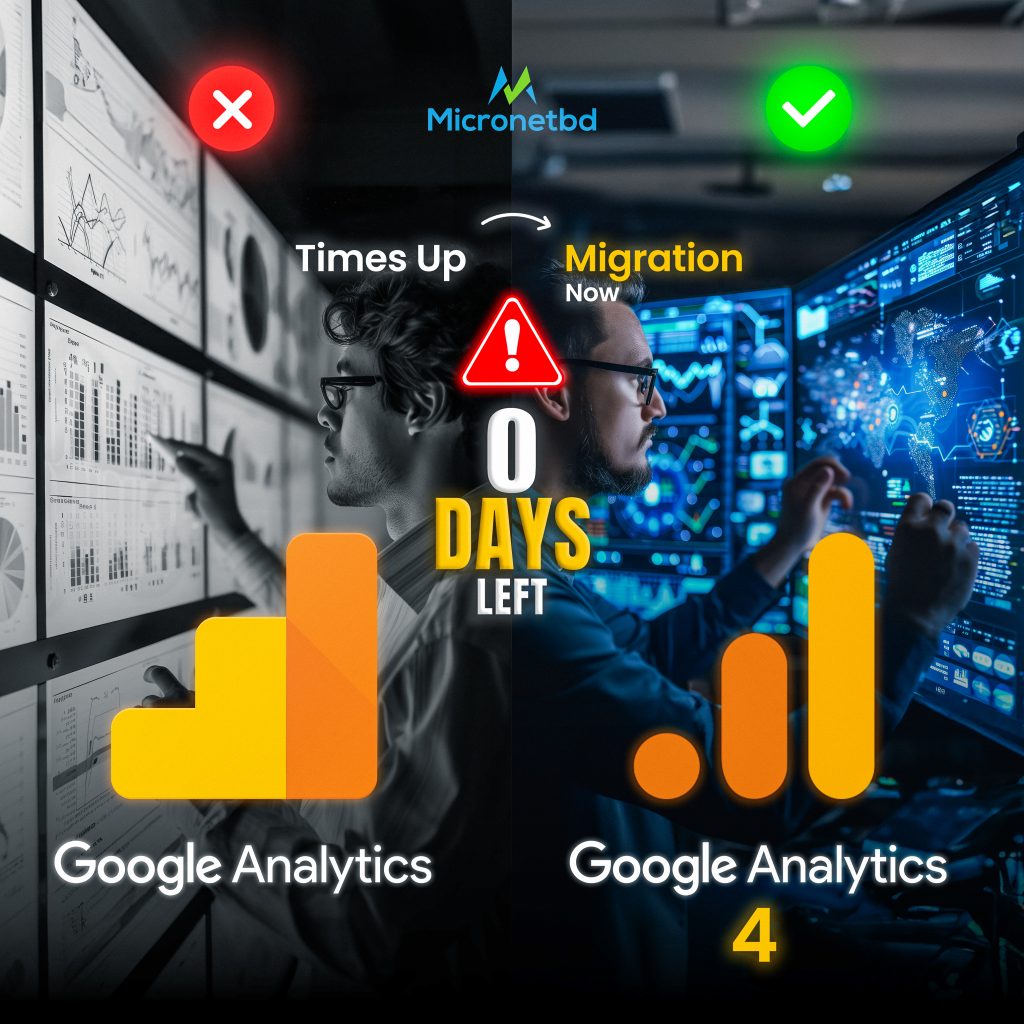Mastering the Transition: From Universal Analytics to Google Analytics 4
The digital analytics landscape is undergoing a significant transformation with the shift from Universal Analytics to Google Analytics 4 (GA4), slated for completion by July 1, 2024. This change is not merely an upgrade—it is a complete reimagining of Google’s analytics platform to better suit modern needs, including enhanced privacy features, cross-platform tracking, and AI-powered insights. Businesses that fail to migrate in time will face a complete cessation of their current analytics capabilities. This extensive guide provides everything businesses need to know about the transition, featuring expert advice, case studies, and technical setup guidance.
Understanding the Shift to GA4
The Need for Change
Google’s introduction of GA4 responds to evolving digital environments characterized by heightened privacy regulations and a shift away from traditional cookie-based tracking. GA4 offers a more robust framework for understanding cross-platform user journeys, integrating data privacy at its core, and utilizing advanced machine learning to compensate for gaps in data.
Key Features of GA4
- Event-based Data Model: Unlike the session-based model of Universal Analytics, GA4 utilizes an event-based model that allows for more flexible and comprehensive data collection.
- Cross-platform Tracking: GA4 excels in aggregating user data across websites and apps, providing a unified view of the customer journey.
- Enhanced Privacy Controls: Built to comply with global privacy laws, GA4 offers features like data deletion controls and consent mode for user privacy management.
- Predictive Analytics: Utilizing machine learning, GA4 can predict future actions such as potential revenue from particular customer segments.
The Consequences of Not Migrating
Failing to transition to GA4 before the deadline will result in several immediate and severe impacts:
Disruption in Data Collection
After July 1, 2024, Universal Analytics will stop collecting new data, which means all ongoing insights into user behavior and conversion tracking will halt abruptly.
Loss of Historical Data Access
The inaccessibility of historical data from Universal Analytics will prevent businesses from performing longitudinal data analysis, crucial for understanding trends and making informed decisions.
Ineffective Marketing Campaigns
With the closure of Universal Analytics, all audience lists used for retargeting and remarketing will cease to function, leading to potentially less effective marketing efforts.
Breakdown of API Integrations
APIs connected to Universal Analytics will no longer function, breaking down integrations that feed data into other systems like CRMs and custom dashboards.
Case Studies
E-commerce Success Story
An e-commerce company that migrated early to GA4 experienced a 30% increase in conversion rates due to the improved tracking of customer journeys across their web and mobile platforms. By leveraging GA4’s enhanced measurement capabilities, they were able to tailor their marketing strategies more effectively and improve targeting precision.
Media Company’s Transition
A media company used GA4 to integrate data from their mobile app and website, gaining a comprehensive view of their audience’s engagement patterns. This integration allowed them to optimize their content strategy, resulting in a 20% increase in user engagement.
Expert Insights
Digital marketing experts emphasize the importance of early migration to avoid disruptions. According to Jane Doe, a digital analytics consultant, “Businesses that procrastinate the transition risk losing valuable insights and operational efficiency. GA4’s capabilities far exceed those of Universal Analytics, offering businesses a significant competitive advantage in understanding and engaging their audiences.”
Technical Migration Guide
Step-by-Step Setup
- Create a GA4 Property: Start by setting up a new GA4 property in your Google Analytics account.
- Configure Data Streams: Identify all sources of user data, including websites and apps, and set up corresponding data streams in GA4.
- Map Out Events: Define the events that are crucial for your business tracking, such as page views, transactions, and user engagements, and configure them in GA4.
- Establish Conversion Goals: Set up conversion tracking in GA4 to continue monitoring key performance indicators.
- Migrate Audiences: Rebuild your audience lists in GA4 to maintain the effectiveness of your advertising campaigns.
- Test and Validate: Before fully transitioning, test the GA4 setup to ensure data accuracy and completeness.
Advanced Configuration
- Custom Dimensions and Metrics: Utilize GA4’s custom definitions feature to tailor tracking to your specific needs.
- User-ID Tracking: Implement User-ID tracking to link interactions from the same user across different devices and platforms.
- BigQuery Integration: Set up a link between GA4 and BigQuery for advanced data analysis and warehousing.
Training and Adaptation
Educating Your Team
Provide comprehensive training for your team on navigating GA4’s interface and utilizing its new features. Consider engaging in workshops or online courses that focus on maximizing GA4’s capabilities.
Leveraging New Features
Explore GA4’s advanced features like predictive metrics and audience lifecycle reporting. Understanding these new tools will allow your team to extract more value from your analytics efforts.
Conclusion
The transition to Google Analytics 4 is a critical juncture for businesses relying on digital insights. This change requires proactive planning, technical readiness, and a strategic approach to data analytics. By embracing GA4, businesses can not only ensure continuity in their analytics capabilities but also gain access to more sophisticated tools to drive growth and enhance customer understanding in a privacy-focused era.
By following this comprehensive guide, businesses can navigate the complexities of this transition smoothly and effectively, securing their competitive edge in the digital marketplace.

